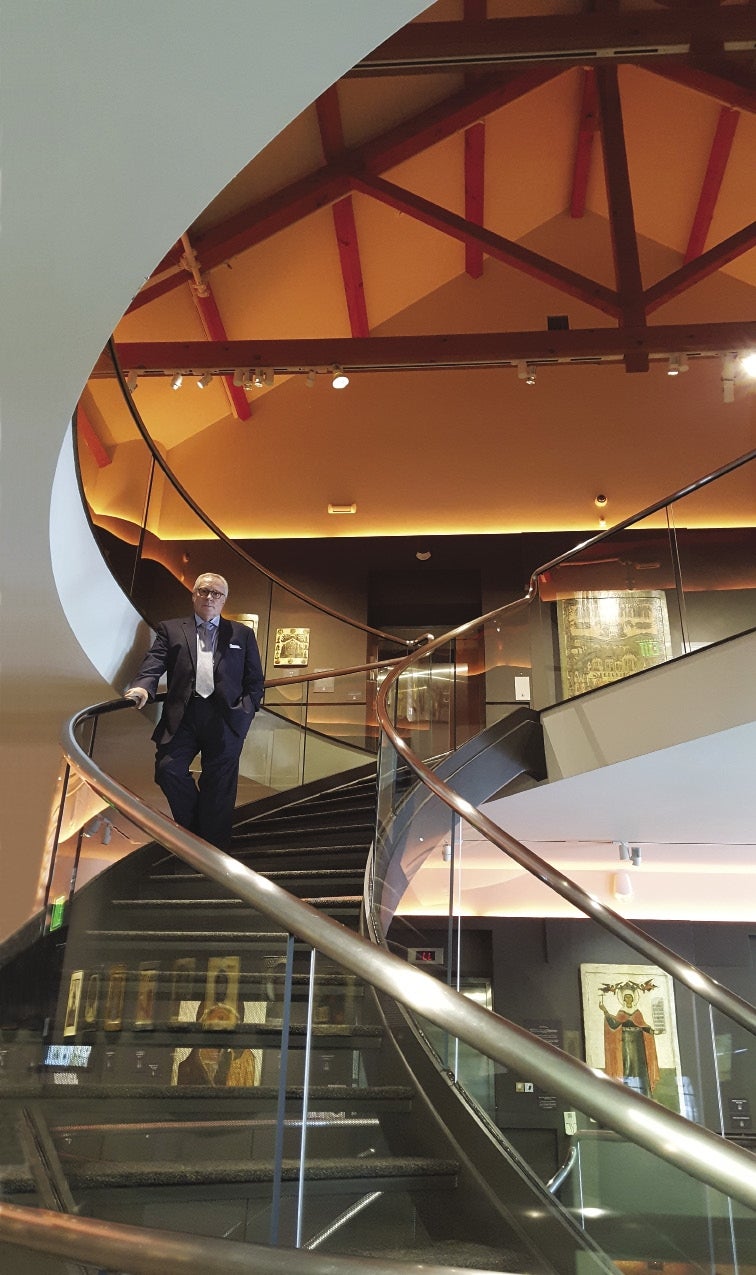Russian icon museum faces international incidents, fundraising goals
 PHOTO/BRAD KANE
Kent Russell, curator
and CEO of the Museumof Russian Icons in Clinton
PHOTO/BRAD KANE
Kent Russell, curator
and CEO of the Museumof Russian Icons in Clinton
Kent Russell and the six person staff at the Museum of Russian Icons in Clinton didn’t expect to be involved in their second international incident in 10 years this summer, but the museum had to send 16 of its more than 1,000 artifacts to be seized in Russia so the Ministry of Culture could grant another temporary export permit for the $1 million worth of icons. This came after the museum had to forgo a $900,000 investment to return a temporary exhibit it had on loan back to Russia. Despite the confusion, Russell said the museum’s primary goal is to promote Russian culture in the U.S. – fulfilling the vision of Gordon Lankton, the former CEO and chairman of Clinton plastics manufacturer Nypro, who founded the museum in October 2007.
The museum has the largest collection of Russian icons outside of Russia, correct?
This is the largest collection of Russian icons outside of Russia. There are three specific icon museums outside of Russia (the other two are in Germany), although there are several significant reasonable collections of icons throughout the world. For example, the Metropolitan Museum in New York has 120 icons, and we have more than 1,000.
What is an icon exactly, and what is its role in Orthodox Christianity?
An icon is a sacred art object, more than it is a work of art. It is created purposefully for the use in prayer and contemplation. It is one of the oldest Western European art forms. It derives directly from very early the ancient world and very early portraiture. It is one of the art forms that remains completely unchanged and is it always was for roughly the last 2,000 years.
How did this collection get its start?
Gordon Lankton had a factory in Moscow, and one day he went to a flea market and picked up an icon for a very modest sum of money in 1991 or 1992. He brought it back, fell in love with the art form.
All of our icons are from Gordon’s collection. He has donated the collection to a 501(c)3 organization that is governed by a board of directors independent of Mr. Lankton, although he is a board member.
What is the value of the entire collection?
We haven’t done an appraisal recently, but the value is in the 10s of millions of dollars.
How do you cover your $1.2 million annual operating budget?
Roughly one third of our operating need is covered by earned income – admissions, programming fees, the net of the retail shop and cafe, tours, royalties, fees that we get for lending icons in exhibitions. Inside of that third is our fundraising, which is about 10 percent of our total budget.
The rest right now is donations from Mr. Lankton, who covers roughly 70 percent of our operating costs of the museum. The gold standard for museums worldwide would be a third, a third and a third – a third fundraising, a third earned income and a third endowment. We will get there eventually.
Are most of your 16,000 annual visitors local or from outside New England?
We get people internationally. If you are deeply interested in icons, this is a must-see collection. We get people from Brussels, from China, from Paris, from England, all over the world. When we do our international conferences, which we do every other year, we get people from Hong Kong, Saudi Arabia, England, France and Russia.
What do they think of Clinton?
People come up to me, and they say, “I love your quaint town.” The thing about Clinton is it has its own independent cinema, it has some pretty good restaurants on the main street – High Street – in town. It is a reasonable size town with all the amenities in it, so it is a nice day trip from Boston or somewhere else. Most people love it.
Video









0 Comments